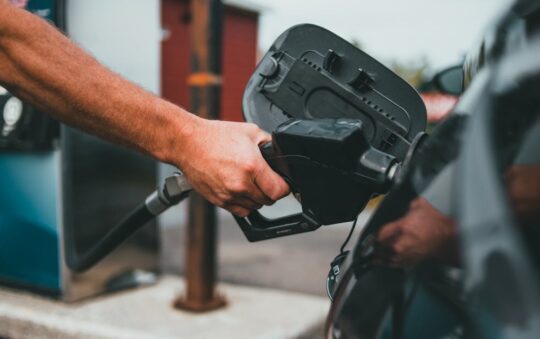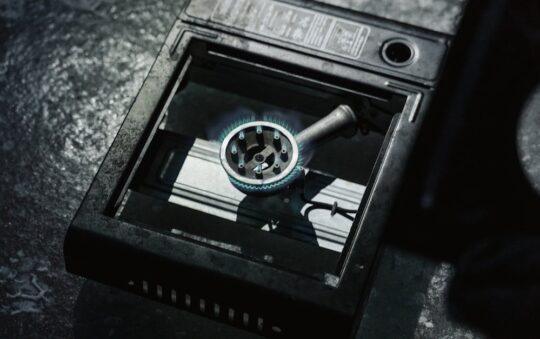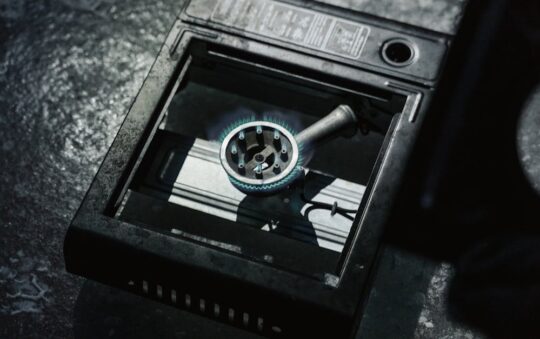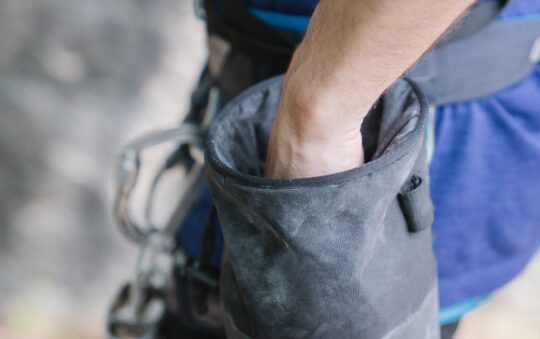Have you ever unrolled your inflatable kayak only to find it a bit worse for wear after storage? I’ve learned the hard way that how you store these lightweight vessels can make all the difference in their lifespan and performance. From avoiding stubborn creases to preventing mold, storing your kayak properly keeps it ready for your next adventure. In this text, I’ll share practical tips that go beyond the basics, helping you protect your kayak so it stays as smooth and reliable as the first time you inflated it.
Importance of Proper Storage for Inflatable Kayaks
Storing an inflatable kayak might sound simple, but if you skip the right steps, you could face unexpected headaches later. I’ve learned this the hard way after struggling with creases that wouldn’t smooth out and the unwelcome surprise of mold forming in damp spots. Proper storage not only keeps your kayak looking fresh but also extends its life and maintains performance on the water.
Here’s what I’ve found makes a real difference:
- Preventing Permanent Creases: Folding your kayak exactly the same way every time or leaving it crumpled can cause stubborn folds. These creases weaken the material and can become permanent, affecting how the kayak inflates and handles.
- Avoiding Mold and Mildew: Inflatable kayaks are mostly made of materials like PVC, which don’t breathe well. Any trapped moisture invites mold and mildew — which not only smells bad but can degrade the fabric. Before storing, give your kayak a good dry-off and pick a well-ventilated space.
- Maintaining Air Retention: Over time, improper storage can cause seams or valves to weaken or leak. Keeping your kayak in a cool, stable environment helps preserve the sealant and prevent air loss.
- Saving Space and Reducing Wear: Proper rolling and packing minimizes the kayak’s size, making storage neat and manageable, and reduces abrasion during handling.
Still, I get it — if you’re just tossing your kayak in the garage without much thought you might not notice problems immediately. But on the third or fourth season, those little issues add up. One quick stat to keep in mind: kayaks stored correctly can last 3 to 5 years longer than those left to their own devices.
To make proper storage part of your routine, here are a few tips that worked well for me (and my kayak survived to tell the tale):
- Rinse the kayak with fresh water after every trip and make sure it’s completely dry before packing.
- Deflate it fully but avoid folding exactly the same way each time; instead, try rolling loosely to prevent hard creases.
- Store it indoors in a dry, cool spot away from direct sunlight or extreme heat.
- Occasionally inspect the material and valves for any wear or damage — catching problems early saves big headaches later.
On top of that, having a storage bag or container dedicated to your kayak keeps dust and pests away while keeping your gear organized for the next adventure.
Being mindful with storage means your kayak will always be ready to hit the water without any last-minute frustrations — and that’s a win for both your weekend plans and your wallet.
Preparing Your Inflatable Kayak for Storage
Storing your inflatable kayak the right way can make all the difference in how long it lasts and how ready it is for your next adventure. I’ve learned some handy steps that keep my kayak in good shape between trips without much hassle.
Cleaning and Drying the Kayak
First up — cleaning and drying. Picture this: you’re back from a glorious paddle, and your kayak is covered in dirt, salt, or freshwater grime. If you stash it away dirty or damp, mold and mildew are ready to crash the party. I’ve found that rinsing the kayak with fresh water after every trip is a simple habit that pays off big.
Here’s what I do:
- Use a hose or bucket of fresh water to wash away dirt and salt.
- Pay extra attention to the seams and valves where gunk loves to hide.
- Let the kayak air dry completely in a shaded, breezy spot — direct sun sounds great but can actually damage the material over time.
Did you know? Up to 70% of kayak damage comes from neglecting proper drying, according to some paddling community surveys. That kind of caught me off guard but now I never skip this step.
Deflating the Kayak Correctly
Next up is deflating. It’s tempting to just punch the valve and shove the air out, but if you’re not careful, you can strain the seams or create folds that don’t want to leave later. When I deflate mine, I open all the valves fully to let the air escape without forcing it. Once most of the air is out, I slowly press down from one end toward the valves keeping the kayak as flat as possible.
Some tips I picked up:
- Don’t fold the kayak immediately — lay it flat to release trapped air pockets.
- Avoid sharp bends while folding to prevent wear and unwanted creases.
- If you have a deflation pump or tool, use it to keep pressure even and controlled.
Deflating properly has saved me from fiddly wrinkles and helped my kayak hold air better for the next use.
Inspecting for Damage or Wear
Before tucking your kayak away, take a good look it over. Even small holes or seam issues might turn into big problems if ignored. After drying, I check for any cracks, holes, or loose valves using both sight and touch.
Here’s how I make it a quick but thorough check:
- Feel along the seams for any soft spots or fluffiness that might hint at separation.
- Inflate the kayak slightly and listen for hissing sounds (signs of leaks).
- Look for discolored patches or worn spots that might need a patch kit.
Catching a problem early is way easier (and cheaper) than dealing with an unexpected leak mid-paddle. Once, a quick pre-storage check helped me spot a tiny puncture that would’ve turned into a real headache offshore.
By giving your kayak a little TLC during storage prep, you’re setting yourself up for smooth and stress-free paddling the next time you hit the water. I find that spending these few extra minutes means more fun and less fuss later.
Step-by-Step Guide: How to Store Inflatable Kayak
Storing your inflatable kayak properly is key to keeping it ready for your next adventure. Let me walk you through some easy steps to store it safely, so you avoid common issues like stubborn creases or unwanted mold.
Choosing the Right Storage Location
Picking the right spot to stash your kayak makes a big difference. I always aim for a cool, dry place—something that’s away from direct sunlight and extreme temperatures. Sunlight can weaken the material over time and cause fading. Heat, on the other hand, can expand and stress seams, leading to leaks.
A garage, shed, or even a shaded closet works well. Just make sure the spot has good air circulation to prevent moisture buildup—a common problem that leads to mold and mildew.
Here’s a quick checklist for your storage spot:
- Away from UV rays and heat sources
- Dry with good airflow
- Out of reach of pests or rodents
- Large enough to avoid cramming or squashing your kayak
Folding Techniques for Compact Storage
Folding your inflatable kayak the right way can save room and keep its shape intact. I’ve learned that rushing into tight folds creates creases that stubbornly stick around—kind of like those annoying wrinkles in your favorite shirt.
Instead, start by rolling rather than folding. Here’s a simple method I follow:
- Deflate slowly, releasing air evenly to avoid putting strain on seams.
- Lay the kayak flat and smooth out any wrinkles with your hands.
- Roll from the bow (front) to the stern (back) loosely but firmly.
- Avoid sharp bends—think of your kayak like a sleeping bag, cozy and rolled.
This technique keeps stress points low and helps the material “remember” its shape. When I skipping this step I noticed permanent creases that took a lot of effort to smooth out later.
Using Storage Bags and Covers
A good storage bag is like a protective sleeping bag for your kayak. I use one with soft lining and a breathable fabric to keep dust, pests, and moisture at bay. The right bag also makes carrying and transporting your kayak way easier.
When shopping for a bag look for these features:
- Breathable material to prevent moisture buildup
- Size that fits your kayak without forcing it in
- Durable fabric with padded sides for protection
- Zippers or closures that keep critters out
Adding a lightweight cover on top during storage adds an extra layer of defense—especially if you’re storing in a spot prone to dust or pests. This helps in keeping the kayak clean and ready to go when you need it.
Quick Storage Tips:
- Rinse with fresh water and let it dry completely before storing.
- Check the kayak for small holes or wear spots before packing.
- Store it loosely for long-term storage but consider gentle inflation every few months to keep the shape.
Pros of Proper Storage Practices
Taking good care of your inflatable kayak when it’s not in use saves you a ton of headaches later. Honestly, I learned this the hard way after ignoring basic storage tips. Here’s why giving your kayak the right storage routine makes all the difference:
- Keeps Your Kayak Shape Perfect
Inflatable kayaks rely on airtight chambers to keep their shape and float well. When you store them properly—rolling loosely and avoiding harsh folds—you prevent stubborn creases that can weaken the material. Over time, those creases can cause leaks or permanently deform the kayak’s structure, making paddling less enjoyable.
- Stops Mold and Mildew in Their Tracks
Moisture trapped inside folds or on the surface sets the stage for mold and mildew, which smells awful and eats away at the fabric. I once skipped drying after a rainy paddle session and ended up with mildew that practically shouted, “Hey, I’m here!” Proper drying and choosing a cool, dry storage spot cut that risk down to near zero.
- Protects Seams and Valves
The seams where the kayak’s sections are joined and the valves that hold air are pretty sensitive areas. If you’re rough when packing or leave the kayak crammed in a hot garage, these parts weaken faster. Proper storage keeps pressure off these vital spots, which means fewer unexpected leaks mid-trip.
- Extends Lifespan and Saves Money
Inflatable kayaks aren’t cheap. Treating them right through smart storage habits means you avoid costly repairs or having to replace your boat sooner than expected. I’ve had friends who ruined their kayaks by stuffing them into small plastic tubs or leaving them in direct sun. Proper storage really stretches your dollar far.
- Keeps It Ready for Your Next Adventure
Nothing’s worse than pulling out your kayak only to find it full of creases, smells funky, or has slow leaks. When you store it properly, you spend less time prepping before hitting the water and more time enjoying it. Plus, if you’re like me, that quick inspection becomes a satisfying ritual before every paddle.
- Prevents Pest Problems
Storing your kayak in a breathable, protected bag cuts down on dust and keeps critters out. Small rodents and insects love hiding in cozy damp places. I learned this when a neighbor’s mouse took a liking to some soft gear, and trust me—it’s not fun to deal with.
If you want to keep your inflatable kayak feeling fresh, sturdy, and ready to roll I can’t stress enough the value of a solid storage routine. Treat it as a “little investment” of time that pays off big dividends on your next water day. On top of that, a well-stored kayak means your whole setup lasts longer so you stay outdoors enjoying more, not fixing or replacing gear constantly.
Common Mistakes to Avoid When Storing Your Inflatable Kayak
Storing an inflatable kayak might sound simple, but I’ve learned the hard way that skipping a few key steps can lead to headaches later. Here are some common pitfalls I’ve seen (and made) that you’ll want to dodge if you want your kayak to stay in top shape.
Folding It Too Tight or Always the Same Way
One easy trap is folding your kayak tightly or folding it the exact same way every time. This practice can leave stubborn creases that become harder to smooth out. Think of it like repeatedly folding a t-shirt along the same line— eventually, the fabric weakens. Instead, I roll mine gently and switch up how I fold it, which helps the material stay flexible.
Stashing It in Damp or Hot Spots
Here’s a classic: tossing your kayak in the garage corner where it’s humid or in direct sunlight. Moisture invites mold and mildew—something I definitely want to avoid—and heat can warp or weaken the kayak’s material. A cool, dry spot with good airflow is your best bet to keep things fresh and durable.
Leaving It Dirty or Wet
No matter how tempting it is to save time, storing a kayak that’s still wet or dusty is asking for trouble. Dirt can wear down the fabric, and moisture leads to mildew. I rinse my kayak with fresh water after every trip, then let it air dry completely before packing it up. This little extra effort prevents nasty surprises and keeps odors at bay.
Ignoring Valves and Seams
Valves and seams are like the kayak’s lifelines. Overlooking a small leak can mean major inflation issues later. When storing, double-check the valves close snugly and inspect seams for any wear or tiny cracks. Catching these early saved me from frantic repairs on my last camping trip.
Using Non-Breathable Storage Bags
I used to pack my kayak into thick plastic bags thinking they’d protect it better. But trapping moisture inside actually made things worse. Breathable storage bags allow air circulation, which cuts down on mold risk. Plus, they keep dust and pests out without suffocating your kayak.
Skipping Periodic Checks During Storage
If you store your kayak for months without a peek, you could miss wear or air loss. I make it a habit to gear up every few months, give it a quick inflation, and inspect everything. This helps maintain the kayak’s shape and catches any issues before they grow.
Quick Tips to Keep Your Kayak Happy in Storage
- Roll loosely instead of folding where you can
- Store in a cool, dry, shaded place
- Always clean and dry before packing
- Use a breathable storage bag, not plastic wrap
- Inspect valves and seams regularly
- Inflate gently every few months to keep shape
Following these simple steps has kept my inflatable kayak ready for adventure—and saved me from many avoidable headaches on the water. Trust me, a little care now goes a long way in making sure your kayak is always good to go.
Tips for Long-Term vs. Short-Term Storage
Storing your inflatable kayak properly can save you a lot of hassle later on. I’ve learned that treating short-term and long-term storage differently makes a big difference in how ready your kayak is when you pull it out.
Short-Term Storage: Keep It Ready to Roll
When you’re planning to use your kayak again in a few days or weeks, the goal is convenience without sacrificing care.
- Air It Out and Loosely Roll: After your last trip, rinse off any dirt or salt with fresh water and let it dry fully. A damp kayak quickly becomes a mold magnet. Once dry, I roll mine loosely instead of folding it tightly to avoid creases.
- Store in a Cool, Dry Place: I keep my kayak somewhere out of direct sunlight and away from heat sources. A garage shelf or a closet works fine as long as it’s dry.
- Keep Valves Slightly Open: For short-term gaps, leaving valves a little loose (not fully deflated) helps keep the material happy and reduces pressure on seams.
- Quick Check: Before you stash it, scan for any new spots that might need patching. I’ve caught leaks early by doing this simple step.
Short-term storage is really about protecting your kayak from wear between uses while keeping it easy to unpack again.
Long-Term Storage: Give It Room to Breathe
If your kayak will be sitting for months (hello, winter!) here’s what I do differently to keep things in shape.
- Full Deflation and Gentle Cleaning: First thing, I make sure the kayak is completely deflated to relieve stress on the material. Then, a thorough rinse and dry is non-negotiable. Last time I skipped drying, mold snuck in even though all my efforts.
- Avoid Folding, Roll Only: Folding creates sharp creases that can become permanent, which means weak points down the line. A loose roll helps the fabric stay flexible and smooth.
- Use a Breathable Storage Bag: I avoid plastic bags unless they are breathable because trapped moisture is the enemy here. A canvas or mesh bag keeps dust out but lets air in.
- Find the Right Spot: A cool, dry indoor space is key. Basements or sheds can be risky if there’s humidity. I store mine off the floor on a shelf or hooks if possible to avoid accidental dampness or pest visits.
- Inflate Occasionally: Every couple of months I re-inflate the kayak just to check the seams and keep the material from getting too compressed. It only takes a few minutes and pays off big time.
My Top Quick Tips for Both Types of Storage
- Avoid storing your kayak near heat sources or in direct sunlight even with a protective bag.
- Never put a wet or dirty kayak away. It’s like packing away a sweaty gym shirt—bad news for freshness.
- Keep your storage areas clean and pest-free. You don’t want unwanted visitors making a home inside your gear.
- Label your repair kit inside the storage bag. Trust me, you’ll thank yourself when a tiny leak pops up unexpectedly.
By treating your kayak a little differently based on how long it’s sitting, you’ll keep it looking and performing great for seasons to come. After all, how many other gear pieces get this much love just to be rolled out and ready for fun?
Maintenance Tips While Kayak is in Storage
Keeping your inflatable kayak in top shape while it’s tucked away is easier than you might think. I’ve learned that a few simple habits can make a big difference in keeping your kayak ready for the water without surprises.
Keep It Dry and Ventilated
Moisture is the sneaky culprit that causes mold and mildew — the kind of stuff nobody wants on their kayak. After your last paddle, I always make sure my kayak is completely dry before packing it away. Even if it feels dry on the outside, any trapped dampness inside folds or seams can cause trouble over time.
Here’s a quick trick: Store your kayak in a cool, dry spot where air can circulate freely. If it’s crammed into a dark closet with zero airflow, mold will likely move in like an uninvited guest. I opt for storage bags made with breathable fabric, not plastic, so the kayak can “breathe” a little while resting.
Give Valves Some Love
Those tiny valves might not get much attention, but they’re key to keeping your kayak inflated and in shape. While in storage, I check that valves are clean and free of dust or grit. If a valve looks grimy, a soft cloth wipe usually does the trick. And every few months, I pump a bit of air back in to keep the material from getting too floppy — kind of like stretching out a cozy blanket before folding it away.
Don’t Tighten Too Much
I’ve seen it happen: People fold their kayaks tightly to save space, but all that pressure can create permanent creases. Nobody wants a kayak that remembers its “origami phase.” Rolling loosely is the way I go — it saves room and is way kinder to the material. The looser, the better. When I’ve squeezed mine too tight, it takes forever to smooth out the wrinkles the next time I use it.
Keep an Eye Out for Pests and Dust
Storage isn’t just about the kayak. It’s about keeping critters and dust away from the material. A good zippered storage bag helps, but I also double-check the storage area itself. A quick wipe down of the kayak’s surface every few months keeps it fresh and ready.
Light Cleaning Sessions
While my kayak is resting, I give it a soft cleaning whenever I can. A damp cloth with plain water usually suffices—harsh chemicals are a no-go because they can damage the kayak’s fabric over time. This gentle routine helped me avoid spots and stains that can weaken the seams.
Quick Checklist for Healthy Storage
- Dry thoroughly before storing
- Roll loosely to avoid creases
- Store in a cool, dry, well-ventilated spot
- Use a breathable storage bag
- Clean valves and keep them free of debris
- Inflate lightly every few months
- Check storage area for pests and dust
- Wipe kayak surface periodically
This simple routine has saved me from unexpected repairs and ensured my kayak is always ready when adventure calls again. Trust me, a little care now means big savings and more fun on the water later.
Alternatives: Storage Options for Inflatable Kayaks
Storing your inflatable kayak doesn’t have to be a one-size-fits-all deal. Over the years, I’ve learned that having a few storage options in my toolkit can make a big difference—especially if your space or lifestyle isn’t what you imagined when you bought your kayak.
Air It Out: Hanging Storage
One of my favorite ways to stash an inflatable kayak is by hanging it up. Think of it like giving your kayak some breathing room. Using wide, padded straps or a sling to suspend the kayak from sturdy hooks in a garage or basement keeps it off the ground and prevents pressure points that can damage the material over time. Plus, this approach helps airflow get underneath, reducing the chance of mold and mildew.
- Best for: People with garage or basement space and hooks or beams to hang from.
- Pro tip: Avoid thin ropes or wire hangers; they leave marks or even cut into the fabric.
The Classic Storage Bag: Simple and Secure
Most inflatable kayaks come with a storage bag, and for good reason. These bags keep dust, dirt, and curious critters out. I always make sure to pack mine loosely rolled inside the bag with good airflow to sidestep those pesky creases that show up when it’s crammed in tight.
- Best for: Easy transport and moderate storage spaces like closets or under beds.
- Quick tip: Choose bags made from breathable fabric so moisture doesn’t get trapped.
Shelves and Flat Storage: Lay It Down, Give It a Rest
If you have extra shelf space in your garage or shed sturdy and flat surfaces make great storage spots. Laying the kayak flat, loosely rolled or partially inflated, prevents those stubborn creases from setting in. Just be sure the shelf area is dry and free of heavy items you don’t want pressing down on your kayak.
- Best for: Homes with dedicated storage rooms or sheds with shelving.
- I’ve noticed kayaks stored flat tend to bounce back faster after long storage periods.
Climate-Controlled Storage: When Temperature Matters
Kayaks are sensitive to temperature swings. Stashing your inflatable kayak in a climate-controlled spot—like a temperature-regulated closet or room—helps avoid the material becoming brittle from cold or overly soft from heat. This storage option might sound fancy but works wonders in places with harsh winters or hot summers.
- Best for: Anyone who lives in extreme weather zones looking to extend their kayak’s life.
- Extra tip: Keep the storage area ventilated to prevent dampness.
Outdoor Storage: Covered and Cautious
Sometimes indoor space is limited, and outdoor storage becomes the only option. I’ve found that using heavy-duty kayak covers that fit snugly and repel water can do the job. Pair this with storing the kayak off the ground—like on raised racks or pallets—to keep moisture and pests away.
- Best for: Backyard or patio storage with limited indoor space.
- Word of caution: Never leave your kayak exposed to direct sunlight for long periods, as UV rays can wear down the material quickly.
Quick Reference: Storage Options Comparison
| Storage Method | Space Needed | Protection Level | Ease of Access | My Take |
|---|---|---|---|---|
| Hanging Storage | Medium | High (air circulation) | Medium | Great for garage setups |
| Storage Bag | Small | Medium (dust & pests) | High | Perfect for packed away kayaks |
| Shelves/Flat Storage | Medium to Large | Medium | Medium | Good when you have room |
| Climate-Controlled | Medium | High (temp & moisture) | Medium | Worth it in extreme climates |
| Outdoor with Cover | Large | Low to Medium (weather) | Medium | Use only if properly covered |
Every time I switch up my kayak’s storage method I notice how small changes make a big difference in the kayak’s lifespan and how ready it is when I’m itching to hit the water. If you only take one thing away, make sure your kayak gets enough air and stays dry—that’s the first step towards happier paddling seasons.
Final Verdict: Best Practices for Storing Your Inflatable Kayak
Taking the time to store your inflatable kayak properly makes all the difference in its durability and performance. I’ve found that consistent care not only prevents damage but also saves money on repairs down the line.
Choosing the right environment and handling your kayak with care during storage ensures it stays ready for your next adventure. By following these best practices, you’ll enjoy smoother paddling seasons and extend the life of your kayak without hassle.
Frequently Asked Questions
How should I prepare my inflatable kayak before storing it?
Rinse your kayak with fresh water, thoroughly dry it in a shaded area, and inspect it for any damage. Avoid folding tightly; instead, roll it loosely to prevent creases. Ensure valves are clean and functioning properly before storage.
Where is the best place to store an inflatable kayak?
Store your kayak in a cool, dry location with good air circulation. Avoid direct sunlight, damp areas, and extreme temperatures to prevent mold, mildew, and material degradation.
Should I deflate my kayak fully for storage?
For long-term storage, fully deflate your kayak after cleaning and drying. For short-term storage, slightly open valves and keep it loosely rolled to maintain its shape and prevent seam strain.
Can I use any bag to store my kayak?
It’s best to use a breathable storage bag designed for inflatables. Non-breathable bags can trap moisture, leading to mold and mildew growth, reducing your kayak’s lifespan.
How often should I check my kayak while it’s in storage?
Inspect your kayak every few months. Check for moisture, mold, damage to seams or valves, and gently re-inflate if needed to maintain shape and air retention.
What are common mistakes to avoid when storing an inflatable kayak?
Avoid folding it tightly, storing it wet or dirty, placing it in damp or hot spots, ignoring valves and seams, and using non-breathable storage bags. These can cause creases, mold, or material weakening.
How can I prevent mold and mildew on my kayak during storage?
Always dry your kayak thoroughly before storing. Keep it in a ventilated, dry place and use a breathable bag. Regularly inspect and clean valves to prevent moisture buildup.
Can I store my inflatable kayak outdoors?
Outdoor storage is possible with a protective cover and in a shaded, dry area, but indoor, climate-controlled spaces are preferable to prevent UV damage and moisture problems.
What folding technique is recommended for storing inflatable kayaks?
Roll your kayak loosely rather than folding it tightly to avoid stubborn creases and strain on the seams, which can weaken the kayak and reduce its lifespan.
Is it necessary to perform maintenance during kayak storage?
Yes, regular maintenance like cleaning valves, checking for damage, and gently inflating to maintain shape helps extend your kayak’s usability and prevents costly repairs.




